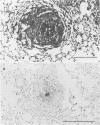Abstract
Silica, a known toxin of mononuclear phagocytes, was administered intravenously to mice during Nocardia asteroides pneumonia. Mice that received silica had a sevenfold decrease in the number of peripheral blood monocytes and developed more severe N. asteroides pneumonia than control mice. Lung histology in mice that received silica resembled that of mice with impaired cell-mediated immunity. These results are most consistent with the explanation that silica injures blood monocytes and impairs their contributions to pulmonary host defense.
Full text
PDF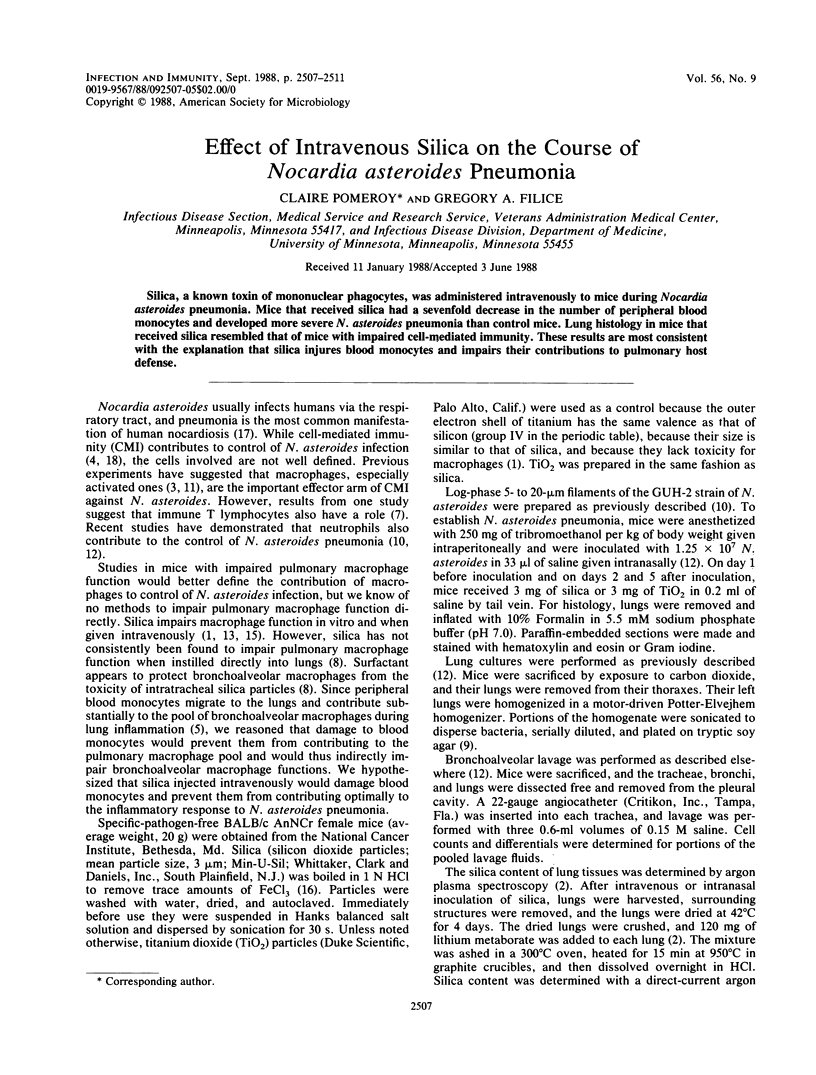
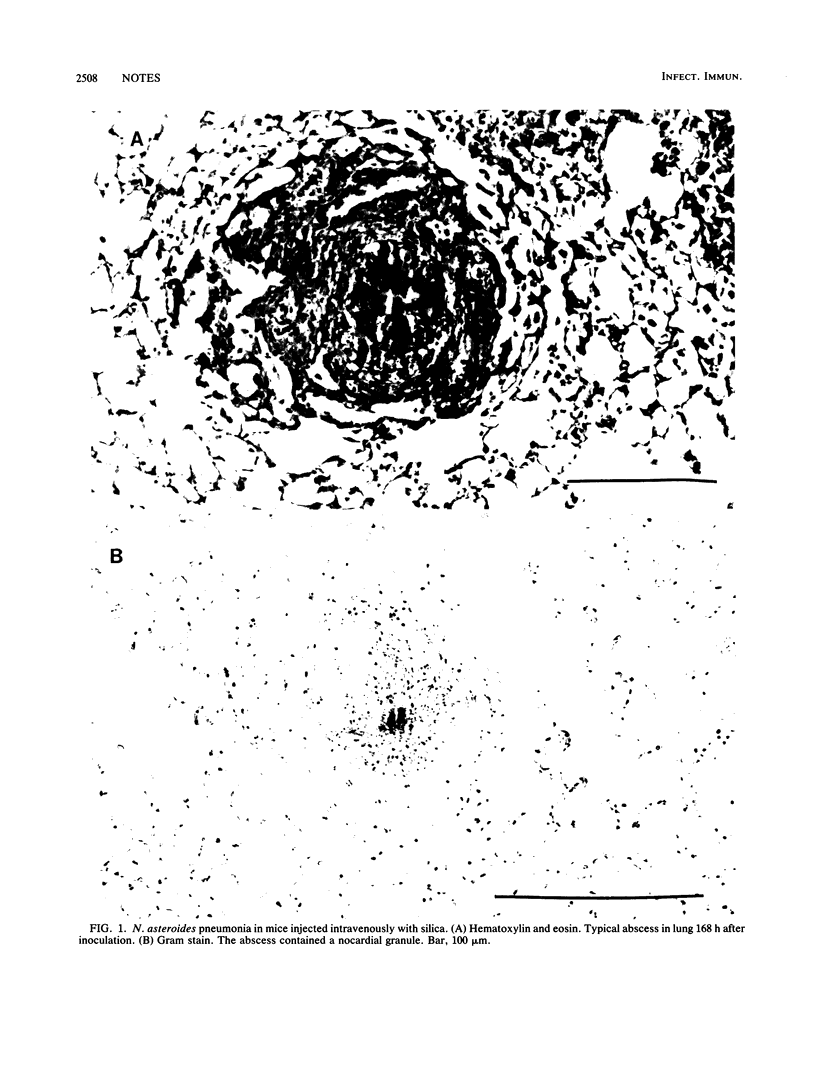
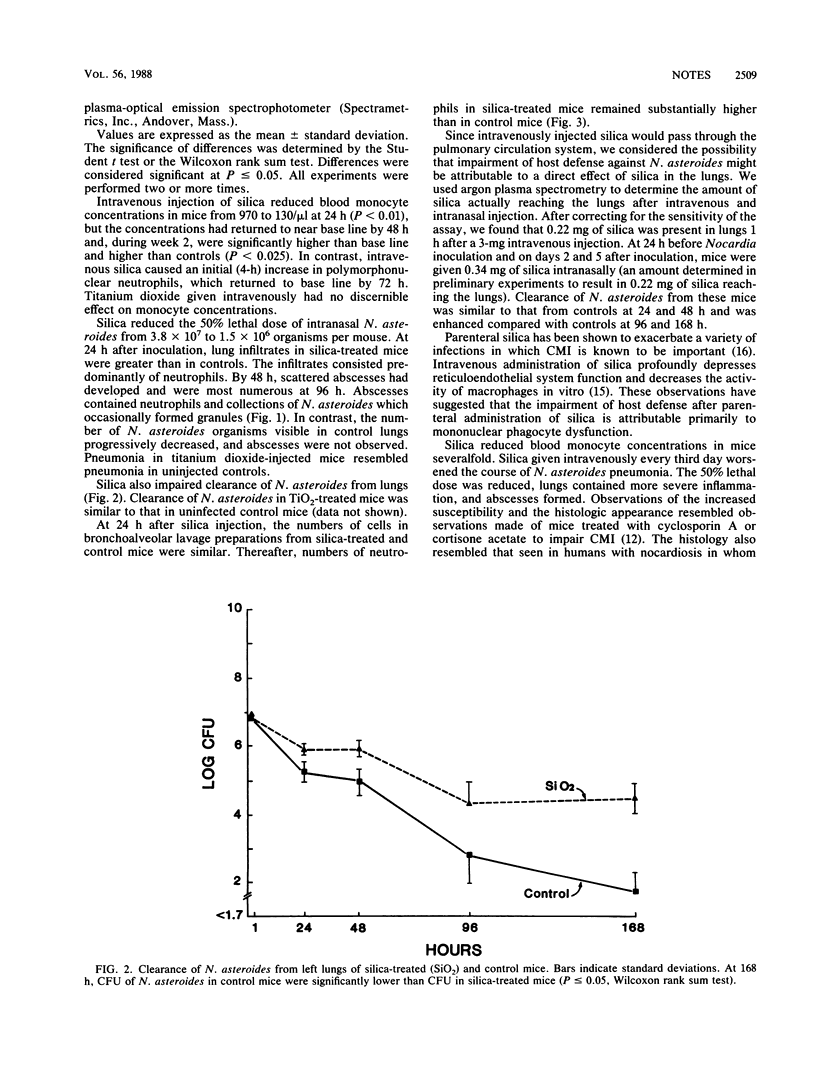
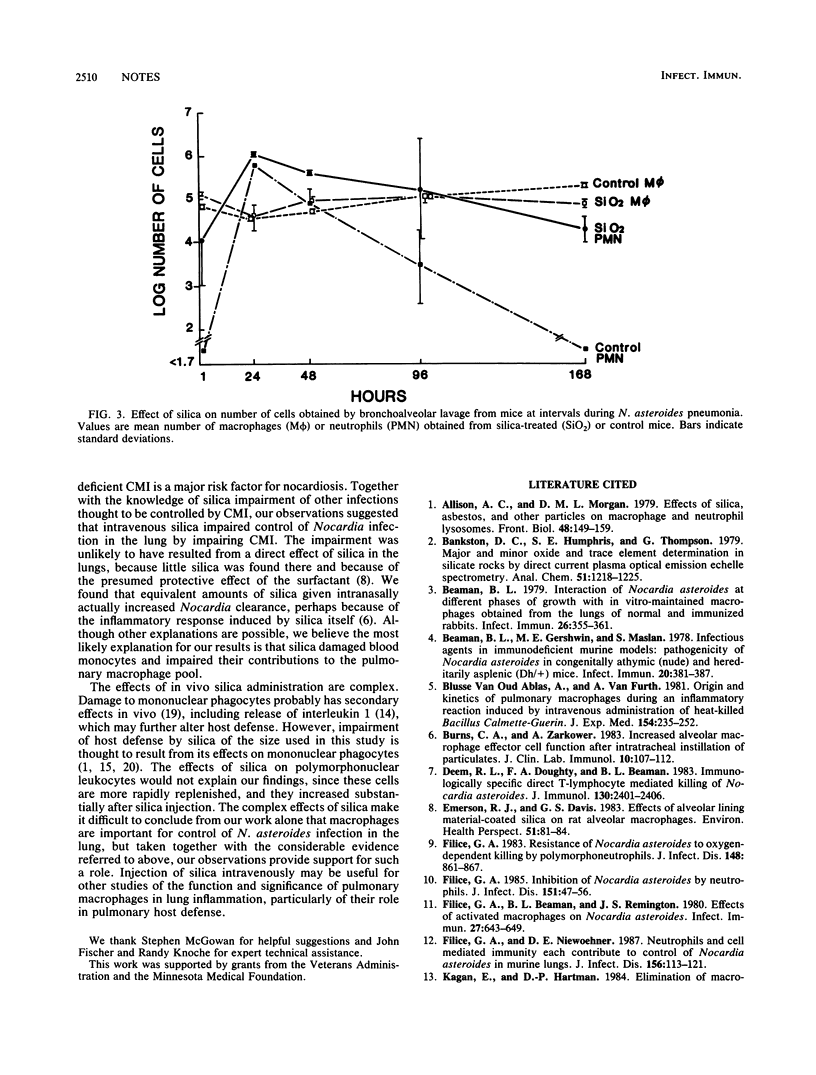

Images in this article
Selected References
These references are in PubMed. This may not be the complete list of references from this article.
- Allison A. C., Morgan D. M. Effects of silica, asbestos, and other particles on macrophage and neutrophil lysosomes. Front Biol. 1979;48:149–159. [PubMed] [Google Scholar]
- Beaman B. L., Gershwin M. E., Maslan S. Infectious agents in immunodeficient murine models: pathogenicity of Nocardia asteroides in congenitally athymic (nude) and hereditarily asplenic (Dh/+) mice. Infect Immun. 1978 May;20(2):381–387. doi: 10.1128/iai.20.2.381-387.1978. [DOI] [PMC free article] [PubMed] [Google Scholar]
- Beaman B. L. Interaction of Nocardia asteroides at different phases of growth with in vitro-maintained macrophages obtained from the lungs of normal and immunized rabbits. Infect Immun. 1979 Oct;26(1):355–361. doi: 10.1128/iai.26.1.355-361.1979. [DOI] [PMC free article] [PubMed] [Google Scholar]
- Blussé van Oud Alblas A., van der Linden-Schrever B., van Furth R. Origin and kinetics of pulmonary macrophages during an inflammatory reaction induced by intravenous administration of heat-killed bacillus Calmette-Guérin. J Exp Med. 1981 Aug 1;154(2):235–252. doi: 10.1084/jem.154.2.235. [DOI] [PMC free article] [PubMed] [Google Scholar]
- Burns C. A., Zarkower A. Increased alveolar macrophage effector cell function after intratracheal instillation of particulates. J Clin Lab Immunol. 1983 Feb;10(2):107–112. [PubMed] [Google Scholar]
- Deem R. L., Doughty F. A., Beaman B. L. Immunologically specific direct T lymphocyte-mediated killing of Nocardia asteroides. J Immunol. 1983 May;130(5):2401–2406. [PubMed] [Google Scholar]
- Emerson R. J., Davis G. S. Effect of alveolar lining material-coated silica on rat alveolar macrophages. Environ Health Perspect. 1983 Sep;51:81–84. doi: 10.1289/ehp.835181. [DOI] [PMC free article] [PubMed] [Google Scholar]
- Filice G. A., Beaman B. L., Remington J. S. Effects of activated macrophages on Nacardia asteroides. Infect Immun. 1980 Feb;27(2):643–649. doi: 10.1128/iai.27.2.643-649.1980. [DOI] [PMC free article] [PubMed] [Google Scholar]
- Filice G. A. Inhibition of Nocardia asteroides by neutrophils. J Infect Dis. 1985 Jan;151(1):47–56. doi: 10.1093/infdis/151.1.47. [DOI] [PubMed] [Google Scholar]
- Filice G. A., Niewoehner D. E. Contribution of neutrophils and cell-mediated immunity to control of Nocardia asteroides in murine lungs. J Infect Dis. 1987 Jul;156(1):113–121. doi: 10.1093/infdis/156.1.113. [DOI] [PubMed] [Google Scholar]
- Filice G. A. Resistance of Nocardia asteroides to oxygen-dependent killing by neutrophils. J Infect Dis. 1983 Nov;148(5):861–867. doi: 10.1093/infdis/148.5.861. [DOI] [PubMed] [Google Scholar]
- Kampschmidt R. F., Worthington M. L., 3rd, Mesecher M. I. Release of interleukin-1 (IL-1) and IL-1-like factors from rabbit macrophages with silica. J Leukoc Biol. 1986 Feb;39(2):123–132. doi: 10.1002/jlb.39.2.123. [DOI] [PubMed] [Google Scholar]
- Levy M. H., Wheelock E. F. Effects of intravenous silica on immune and non-immune functions of the murine host. J Immunol. 1975 Jul;115(1):41–48. [PubMed] [Google Scholar]
- O'Brien A. D., Scher I., Formal S. B. Effect of silica on the innate resistance of inbred mice to Salmonella typhimurium infection. Infect Immun. 1979 Aug;25(2):513–520. doi: 10.1128/iai.25.2.513-520.1979. [DOI] [PMC free article] [PubMed] [Google Scholar]
- Palmer D. L., Harvey R. L., Wheeler J. K. Diagnostic and therapeutic considerations in Nocardia asteroides infection. Medicine (Baltimore) 1974 Sep;53(5):391–401. doi: 10.1097/00005792-197409000-00005. [DOI] [PubMed] [Google Scholar]
- Simpson G. L., Stinson E. B., Egger M. J., Remington J. S. Nocardial infections in the immunocompromised host: A detailed study in a defined population. Rev Infect Dis. 1981 May-Jun;3(3):492–507. doi: 10.1093/clinids/3.3.492. [DOI] [PubMed] [Google Scholar]
- Uber C. L., McReynolds R. A. Immunotoxicology of silica. Crit Rev Toxicol. 1982 Oct;10(4):303–319. doi: 10.3109/10408448209003370. [DOI] [PubMed] [Google Scholar]
- Wirth J. J., Carney W. P., Wheelock E. F. The effect of particle size on the immunodepressive properties of silica. J Immunol Methods. 1980;32(4):357–373. doi: 10.1016/0022-1759(80)90028-9. [DOI] [PubMed] [Google Scholar]



